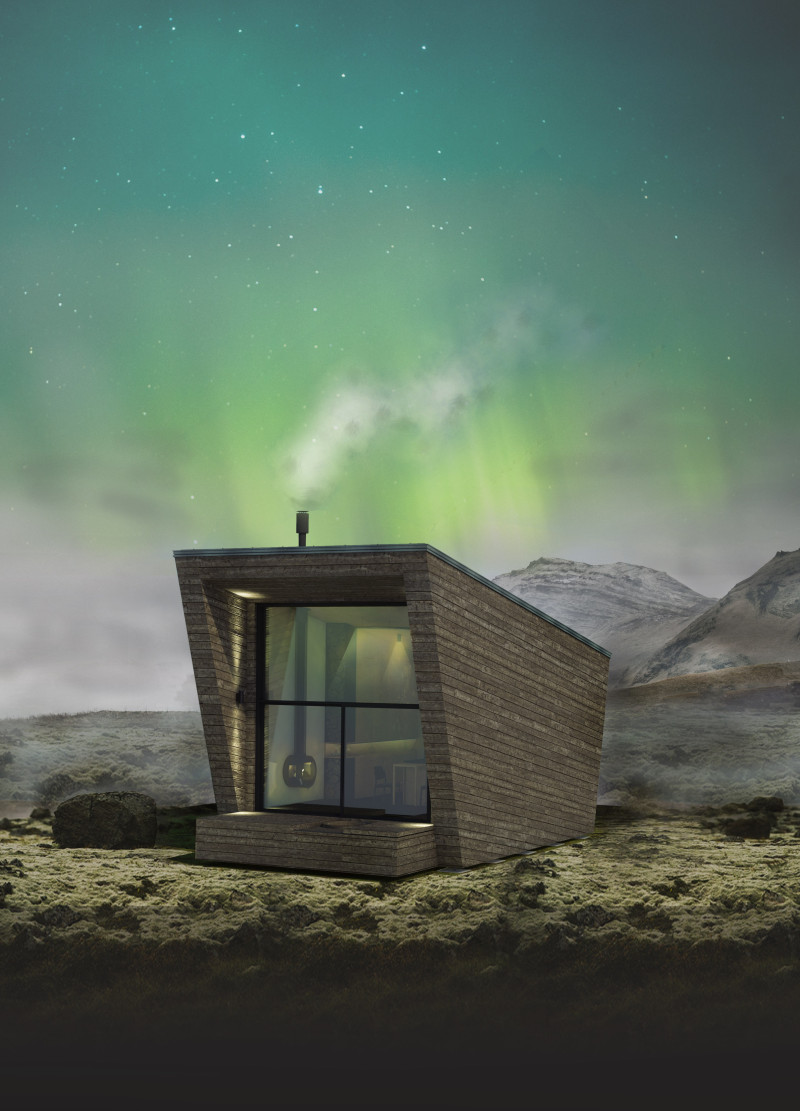5 key facts about this project
The project aims to create a retreat that fosters a connection to nature, with carefully positioned cabins facing the Grjótagjá Hot Springs Caves. This strategic orientation allows visitors to engage with the natural beauty and unique geological features of the region. Each unit is designed to function independently, providing a self-sufficient living space that includes a living area, kitchen, bathroom, and sleeping quarters.
Design Innovation and Sustainability
What sets this project apart from conventional hospitality architecture is its commitment to sustainability and environmental harmony. The cabins utilize a range of materials that support energy efficiency and reduce ecological impact. The use of wood for structural components provides warmth and aesthetic appeal, while insulated steel panels enhance thermal performance. Photovoltaic panels integrated into the roof harness solar energy, ensuring the cabins generate their own electricity.
The layout of the cabins prioritizes functionality and comfort, with distinct zones for privacy and social interaction. The living area features a fireplace and foldable sofa, promoting a cozy atmosphere conducive to relaxation. The incorporation of rainwater collection systems further underscores the design's focus on conservation and resource efficiency.
Integration of Natural Elements
Another unique aspect of the Guest Cabin project is its architectural expression that reflects the surrounding landscape. The sloping rooflines mimic the contours of the terrain, while natural stone and timber cladding create visual cohesion with the environment. Large glass windows facilitate natural light, providing unobstructed views of the breathtaking landscape. This design approach not only enhances the guest experience but also reinforces the cabin's connection to its site.
The combination of sustainable design practices and consideration for natural aesthetics positions the Guest Cabin project as a relevant example of contemporary architecture that respects its surroundings. For those interested in understanding the intricate details of the project, including architectural plans, sections, and innovative design ideas, further exploration of the project's presentation is encouraged.


























